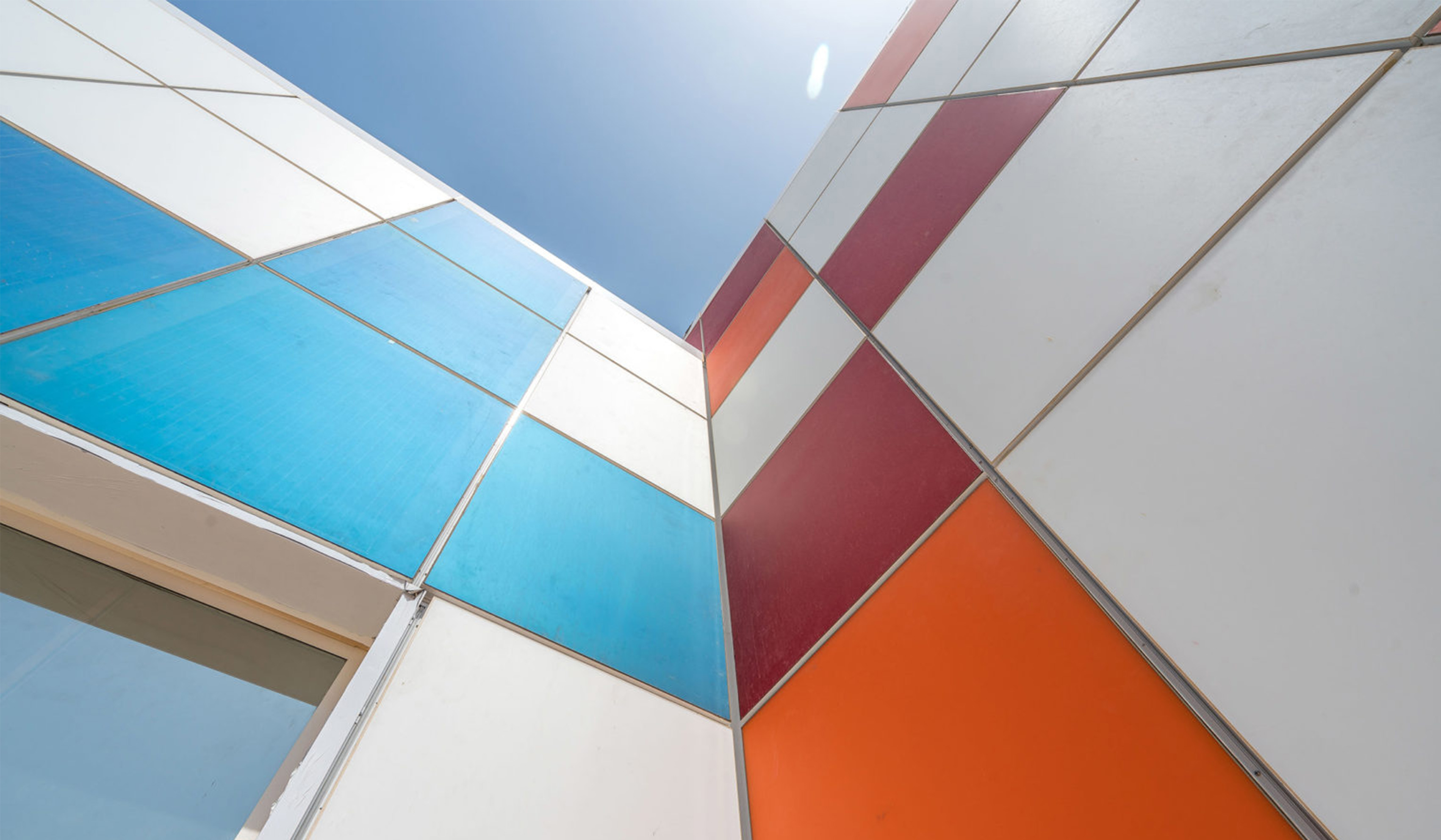In other words, to really keep the renewable industry booming, buyers — from individuals to institutions — will need to be able to purchase solar panels that look good.
There are several exciting projects currently tackling this exact challenge. These initiatives are not only “beautifying” solar panels but making them thinner, more flexible, more transparent and available in different colors— providing aesthetic personalization along with technical efficiency. Here are three notable developments using visual design and technological breakthroughs to make solar panels more inviting for a wider range of surfaces and clients:
Colored Solar Panels
SwissINSO, a company dedicated to enhancing the aesthetics and efficiency of photovoltaic and thermal energy technologies, invented the world’s first colored solar panels. Their technology, named Kromatix™, was born from the need for less visually uniform solar panels that could be easily formatted onto a building.
- SwissINSO’s president, Rafic Hanbali, was inspired to create Kromatix™ by observing a blue Morpho butterfly. He noted that the butterfly’s color doesn’t come from pigments, which emit a large spectrum of light, but thin layers that filter light and therefore conserve more energy.
- In this vein, Kromatix™ is treated in such a way that it doesn’t reflect light — which uses precious energy — yet allows light to pass through for energy conversion. This ability to save energy means the solar panels don’t need to be tilted to maximize their solar intake, making them perfectly effective when installed vertically on the sides of buildings.
- Buildings contribute to 40% of our energy usage, and the ability of Kromatix™ to generate power on the spot removes the costly and carbon-heavy steps of production and transportation. A Kromatix™ facade is within the same budget as a glass one, but factoring in the savings in energy costs makes Kromatix™ a very competitive choice.

Mimic Design
Solar Visuals, a Dutch start-up, collaborated with the Netherlands Organisation for Applied Scientific Research (TNO), the architecture firm UNStudio and the BAM construction group to create solar panels that imitate the surfaces of buildings. Known as “mimic design,” this concept is another promising way of using facades to generate energy:
- The panels, which can be produced in any color or size, reproduce the image of the building’s surface, and can even display art or logos.
- With 13% efficiency, these panels have a semi-transparent, colored layer composed of small dots. From up close, the dot pattern makes the panels look like contemporary art, while the image or pattern appears when farther away.
- Currently, the panels are being prepared for pilot projects before scaling up.

Glass-like Panels
Another Dutch solar expert, designer Marjan van Aubel, will showcase her stained glass-like solar panels at the Expo 2020 Dubai. Integrated into ceilings, these colorful photovoltaic cells are a source of both electricity and light:
- Lightweight and made from polyethylene terephthalate, the panels use titanium dioxide nanomaterials to turn sunlight into electricity, and are covered in organic, light-absorbing dyes that give them their beautiful colors.
- The panels, which adhere to translucent surfaces like stickers, will be part of the rooftop of the Dutch pavilion at the expo, which has been postponed to 2021 due to COVID-19. Once the event is finished, the panels will be repurposed for other projects in an attempt to promote reusability and a circular economy.
- Van Aubel believes that aesthetics plays a major role in the switch to renewable energy: "We're not going to change the world with ugly things."

